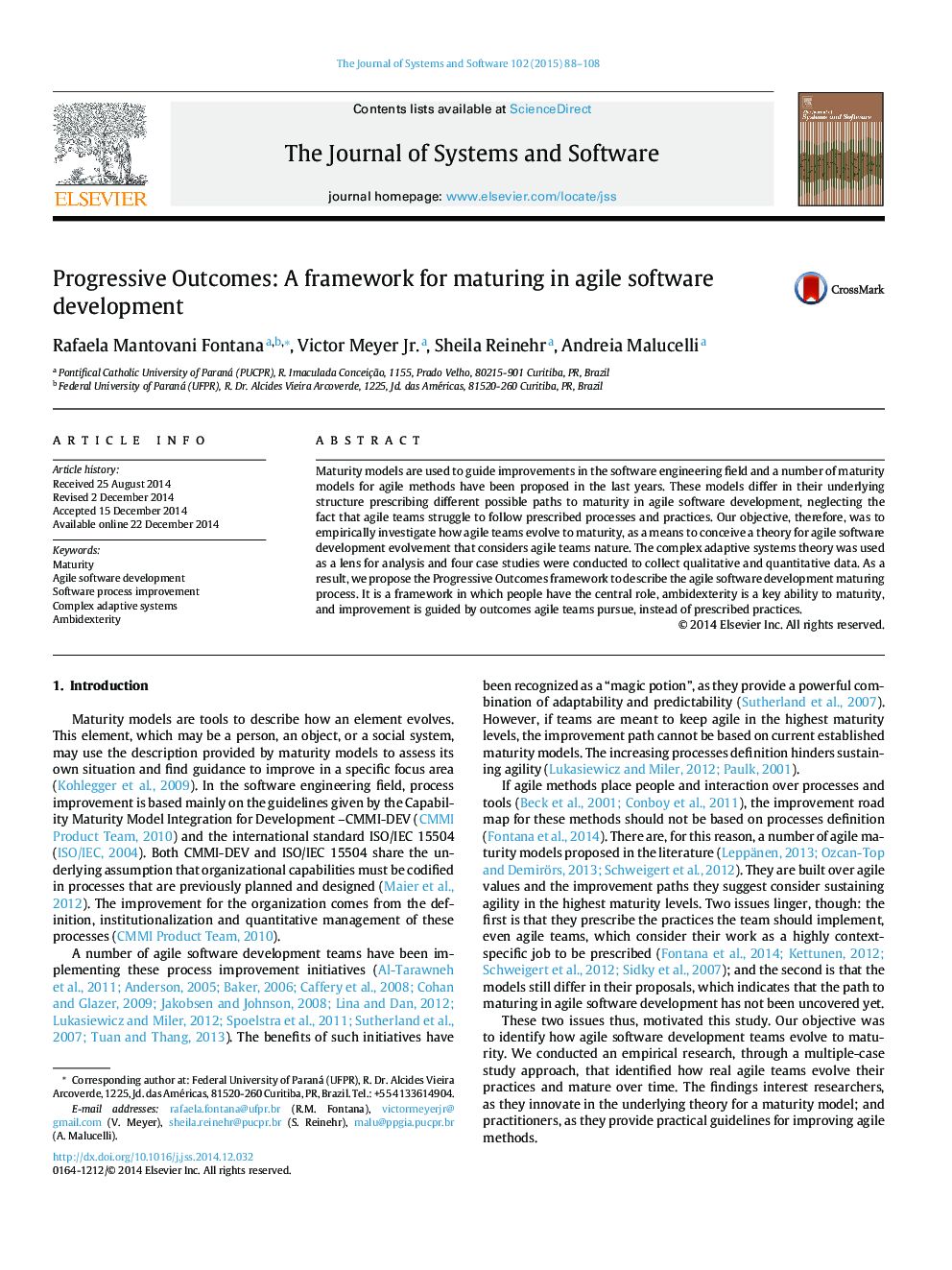| Article ID | Journal | Published Year | Pages | File Type |
|---|---|---|---|---|
| 459473 | Journal of Systems and Software | 2015 | 21 Pages |
•Agile software development maturing process has people play the central role.•Ambidexterity is a key ability to agile maturity.•Improvement is guided by outcomes agile teams pursue.•Pursued outcomes in practices, team, deliveries, requirements, product and customer.
Maturity models are used to guide improvements in the software engineering field and a number of maturity models for agile methods have been proposed in the last years. These models differ in their underlying structure prescribing different possible paths to maturity in agile software development, neglecting the fact that agile teams struggle to follow prescribed processes and practices. Our objective, therefore, was to empirically investigate how agile teams evolve to maturity, as a means to conceive a theory for agile software development evolvement that considers agile teams nature. The complex adaptive systems theory was used as a lens for analysis and four case studies were conducted to collect qualitative and quantitative data. As a result, we propose the Progressive Outcomes framework to describe the agile software development maturing process. It is a framework in which people have the central role, ambidexterity is a key ability to maturity, and improvement is guided by outcomes agile teams pursue, instead of prescribed practices.
Graphical abstractFigure optionsDownload full-size imageDownload as PowerPoint slide
